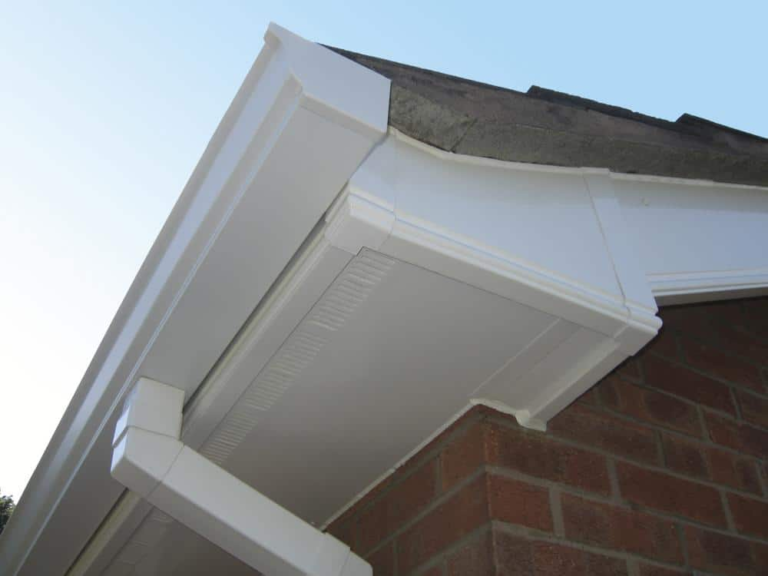Blog entry by Kathryn Baylor
Soffit Replacement: A Comprehensive Guide
Soffits play a crucial function in the overall health and aesthetics of a home. Positioned below the eaves of a roofing system, they offer ventilation and add to the structural integrity of the structure. With time, nevertheless, soffits can end up being broken or deteriorate due to different aspects, requiring their replacement. This article provides an extensive check out soffit replacement, the materials involved, the procedure, and answers to regularly asked questions.

Comprehending Soffits
Soffits are the noticeable surface areas that connect the outside of your house to the roof overhang. They are often made from products such as wood, vinyl, or aluminum. Their primary functions consist of:
- Ventilation: Soffits enable appropriate air flow in attics, preventing wetness accumulation and decreasing the danger of mold and structural damage.
- Protection: They shield rafters, beams, and other parts of the roof from the components.
- Aesthetic Appeal: Soffits contribute to the appearances of a home, boosting its curb appeal.
 Signs Your Soffits Need Replacement It is important for property owners to recognize when soffits require replacement. Some typical indications include:
Signs Your Soffits Need Replacement It is important for property owners to recognize when soffits require replacement. Some typical indications include:
- Water Damage: Stains or staining might suggest leakages or inadequate ventilation.
- Pest Infestation: Exposure to wetness attracts insects like bees and termites, which can jeopardize the structure.
- Peeling or Cracked Paint: This is typically a sign of underlying wood rot, especially in wooden soffits.
- Swelling or Warping: As materials soak up wetness, they may begin to warp, requiring replacement.
Choosing the Right Material
When changing soffits, property owners can select from different products. The most common choices are:
| Material | Benefits | Drawbacks |
|---|---|---|
| Wood | Conventional appearance, easy to paint and stain | Prone to rot, requires regular maintenance |
| Vinyl | Low maintenance, moisture resistant, available in different colors | Can end up being fragile in severe temperature levels |
| Aluminum | Long lasting, rust-proof, and does not need painting | Minimal color options, can damage quickly |
| Fiber Cement | Highly durable, fireproof, and low maintenance | Heavier, can be more expensive |
The Soffit Replacement Process
Replacing soffits can be a workable DIY project or a task for professionals, depending on the homeowner's skill level and comfort. Here is a streamlined step-by-step process:
Step 1: Assess the Damage
Before proceeding, it is essential to inspect the existing soffits thoroughly. Recognize the level of the damage and figure out whether replacement is needed.
Action 2: Gather Materials and Tools
Property owners must gather all required products and tools before starting the job. A common list consists of:
- Replacement soffit panels (wood, vinyl, or aluminum)
- Caulk and caulking weapon
- Saw or cutting tool
- Drill or repairmywindowsanddoors.Co.Uk screwdriver
- Security goggles and gloves
- Ladder
Action 3: Remove the Old Soffits
Carefully eliminating the old soffits is vital. Start by detaching any trims or moldings around the edges. Use a saw to cut through nails and get rid of the soffit panels.
Step 4: Install Ventilation Baffles (if required)
Before setting up new soffits, look for adequate ventilation. Set up baffles that enable air to stream freely, reducing the threat of moisture accumulation.
Step 5: Install New Soffit Panels
Cut the brand-new soffit panels to the proper size and secure them in location using screws or nails. Be sure to leave areas for vents if appropriate.
Step 6: Seal and Finish
As soon as set up, seal the edges with caulk to avoid water infiltration. Depending on the material utilized, add paint or finish as desired.

Step 7: Cleanup
After the installation is complete, clean the work area and get rid of the old products appropriately.
Frequently Asked Questions (FAQs)
Q1: How long does soffit replacement last?A1: The longevity of changed soffits depends upon the product utilized. Vinyl and aluminum soffits can last 20-40 years, while wood typically requires more maintenance and may last 10-20 years. Q2: Can I replace soffits myself?A2: Yes, homeowners with fundamental woodworking abilities can perform a soffit replacement. Nevertheless, working with specialists is recommended for intricate setups or bigger homes. Q3: How much does soffit replacement cost?A3: The cost usually ranges in between ₤ 6 to ₤ 30 per linear
foot, depending upon the product chosen, labor costs, and the
size of the job. Q4: What kinds of soffit ventilation are available?A4: Options include gable vents, soffit vents, and constant soffit vent systems to
ensure appropriate airflow in attics. Soffit replacement is
a crucial home maintenance task that can substantially affect a property's stability and look. House owners should stay vigilant for signs
of deterioration and consider replacement choices that best match their needs and spending plans. By selecting premium products and following the proper installation procedures, they can ensure that their homes remain well-ventilated and aesthetically appealing for many years to come. Whether selecting a DIY approach or working with a professional, comprehending the procedure produces a smoother and more effective soffit replacement experience.
